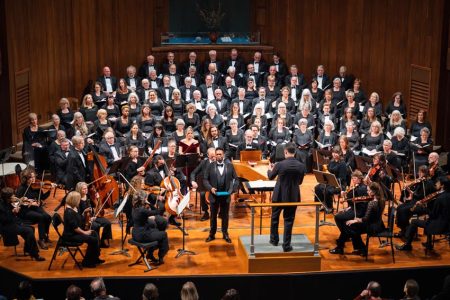Asheville’s School Bands

Over the generations music has inspired many quotations.
Albert Einstein once said, “If I were not a physicist, I would probably be a musician. I often think in music. I live my daydreams in music. I see my life in terms of music.”
Music has its place in all the earth. Many people consider school bands the heart that pumps life through the arteries of educational institutions.
Bands are an important part of the course work of schools that are fortunate enough to house them. Asheville High School is one such fortunate school, but has anybody wondered about the racial makeup of the members of Asheville High School’s band?
A lady who was born and raised in Asheville but who now resides in Michigan waited excitedly to see Asheville High School’s band, which she knew had been invited to participate in the national inauguration parade in January 2013. She was stunned to see so few African American students participating, wondering, “Why am I seeing so few African Americans with this group? What is the racial composition of Asheville High? Who is responsible for recruiting band members?” Some of the questions that were circulating through her mind were addressed by several people who are familiar with the city school bands.
Mrs. Eula Shaw, an English teacher who retired from Asheville City Schools after 20 years, raised concerns about the drastic decline in the number of African Americans in the band program two years ago. “During my tenure, the band was diverse with thirty to thirty-five African American students. Today the numbers tell a different story. Out of a hundred-thirteen band members, only seven are African Americans. This is only six-point-two percent! My question is why?
“The whole system should have asked that question several years ago. Each school has an improvement plan; the system has an improvement plan. They know the many benefits of studying instrumental music. Many studies show positive correlations between music and success in math, science, and languages. They have shown students in band tend to score higher on SATs and other tests. Increasing diversity in band should have been considered one of the strategies to help close the achievement gap.”
Mychal Bacoate explained how he became involved in the band from the beginning. “Band preparation began for me in fifth grade. Transition from elementary school to middle school can be difficult for some students. Many of these students do not give much thought to what their electives will be as they sign up for classes at the middle school.”
But he noted, “Unfortunately, emphasis is not placed on the arts during that changeover, but if middle school students decide to join the band, the instruments will not be anything new to them. They have been exposed to the instruments by attending band performances, by watching bands and sports events on TV and in local schools, and seeing and hearing music in church.
“They need to understand that when they opt to join the band they will go into a controlled atmosphere and will be subjected to discipline and structure. If they understand these things, they simply need to convince their parents that they want to join the band. Fortunately, for me, some of the old school teachers were at the middle school when I got there and because of that, I was encouraged to stay in band for the three years I was there.
“I was properly introduced to band. Ms. Weeks, the band teacher at the middle school, had a personality that was suited to middle school students. She was a good teacher. The instruments were separated, while I trained there, which allowed me to get more one-on-one attention.”
Mychal is a 2003 graduate of Asheville High School and participated in the band for two of his four years there. “Although I elected to go into band in high school, I didn’t like the instrument I had chosen to play in middle school. I was able to change my instrument in high school.
“I enjoyed the band atmosphere. It was a place for me to socialize and play music. I love music and Asheville High gave me an opportunity to nurture that passion. I like to have fun. Band was where my friends were and that was a way to see my friends during the day. It was also a good GPA booster.”
When asked what advice he would give to African Americans to interest them in joining the band, he stated, “Know your history. Music in this country is influenced by African Americans of the past. If you are musically inclined, pursue it, and know how important it is. Asheville is a haven for all kinds of music. Participation in band is a good experience.”
Ideally, the band and any other organizations in a school should reflect the racial makeup of that school. This does not happen in real-life situations, simply because no matter the percentage of students in each racial group, the percentage interested in joining any particular organization will be different. Still, there should be some correlation.
The number of students in each racial group at Asheville High School is the following: 572 whites, 318 African Americans, 47 Hispanic, 17 Asians, and one American Indian.
Will Talley, Asheville High School’s band director stated, “Encouraging minority students’ participation in the band would be a goal for me, but the band students are recruited at the middle school level. It’s not impossible to interest students in joining the band at the 9th grade level, but they would be behind the students who learned to play at the middle school. We don’t want them to be put in a position that would create an achievement gap; therefore, beginning band is not offered at the high school level.”
Ms. Weeks and Ms. Schaffer, the middle-school band teachers, talked about their role in preparing students for entrance into Asheville High School’s band, which will be a different process in 2013. Because the school is changing to a common core curricular program, everybody had to be registered for middle school by March of this year.
Thus they held Band Night this spring, during which several parents and elementary teachers brought children to Asheville Middle School to be enrolled in the band. During that time Ms. Schaffer and Ms. Weeks were also invited to come to other elementary schools to sign up more students, and 130 boys and girls have signed up for next year’s band. Those numbers should serve to relieve the racial gap in the future.
The two women did an in-service for the first time with several music teachers, answering questions about what their expectations are and what they want the students to know. They have no problem working with students who have never touched an instrument; in fact, they said, they would like that.
Scholarships are also available (as long as they have money, earned through fundraising events. To qualify, a student must write a persuasive letter to the band teachers.
The teachers also communicate with parents, by email when possible, and by letter to parents who don’t have an email address. It is important to make parents aware of expectations, since the students will be responsible for expensive instruments. Additionally, parents need to be involved because students are expected to practice at home, though when circumstances don’t allow home practice, they can rehearse in the band room before classes begin.
Jasmine White, mother of an eighth-grade middle-school band student, Ashley, and an upcoming sixth-grade band member, Ayden, said, “Ashley dances with Amy Shaffer’s daughter. Ms. Shaffer talked Ashley into joining Asheville Middle School’s band. She started out playing clarinet, but learned a little later that the band needed more students to play percussion instruments. She tried drums and liked it; therefore, she stuck with it. When she gets to Asheville High School, during the fall, she’ll fill in on drums and she’ll be a color guard.
“Band membership has been beneficial to Ashley because it has sparked her interest in various kinds of music, and she has met other interesting students.”
There are fees and costs for participation in band, and Ms. Shaw has worked with the school system and Delta House to ensure that costs will not prohibit participation. Fees include T-shirts, notebook, plastic sleeves, and music, as well as band camp. Delta House has established the Ollie Reynolds Instrumental Music Scholarship to ensure that fees will not keep a child from taking band, and the school system will help secure instruments for those in need.
Ms. Shaw noted, “Parents and the community must help these young middle school students see the benefits of learning to play an instrument and provide support and encouragement that will keep them excited and engaged. I’d like for musicians who are willing to help band students who might need an extra hour or two of practice periodically to call the Delta House and register as a volunteer as part of the Ollie Reynolds Instrumental Scholarship. Those students who stay the course will find life-enhancing benefits as well as joy now and in the future.”








